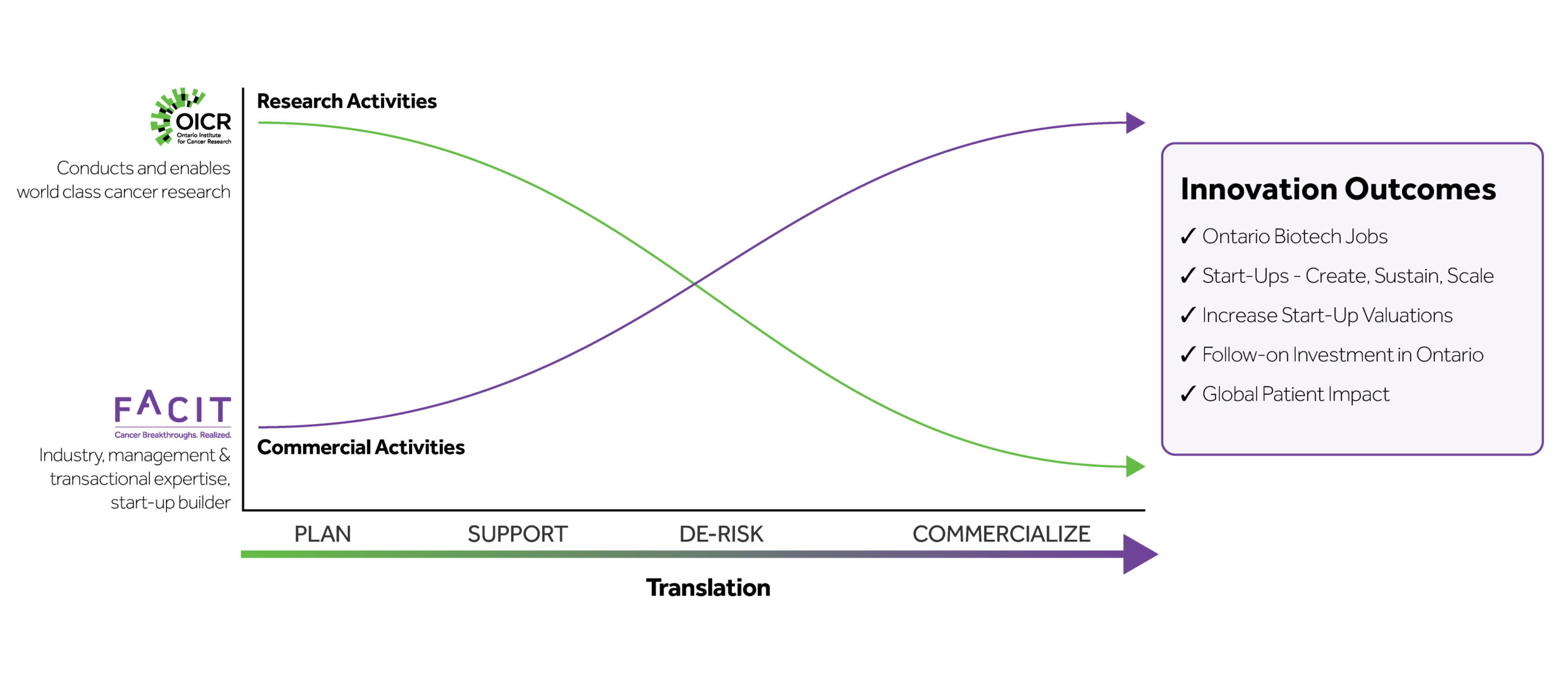Public-private-partnerships as drivers of research translation and innovation outcomes in healthcare commercialization
Author(s):
David O’Neill, PhD
Christine Williams, PhD

In a climate where public funding is emphasizing value for money, there is a rising need to better capitalize on government investment in research and existing infrastructure. Historically, outcomes for publicly-funded research institutions have included metrics such as number of high-impact publications, level of external grant funding, and generation of intellectual property (IP). Despite the importance of these outputs, innovation outcomes are evolving to include measures of economic impact, such as formation and scaling of start-ups, job creation, attraction of private investment, and local commercialization of intellectual property. Strikingly, future funding of these institutions may now also be directly tied to the achievement of these economic-driven innovation outcomes.
For publicly-funded research institutions to succeed in this evolving climate, public-private-partnership (PPP) models will be increasingly needed by these institutions and correspondingly favoured by funding agencies. By joining resources and expertise through a PPP, public and private stakeholders can reduce R&D costs/burden, share risk and help each other capture greater value from scientific discoveries. The efficiency and success of PPPs is dependent on strong governance, project management structures on both sides, and the integral role of a neutral innovation-enabler at the interface between public and private stakeholders .
Through its seed capital and oncology specialization, FACIT has successfully played this critical innovation-enabler role between several industry partners and its strategic partner, the Ontario Institute for Cancer Research (OICR). Funded by the Government of Ontario, OICR harnesses the province's high impact research and strengthens collaboration among its world-class cancer research centres to generate a rich pipeline of breakthrough oncology assets. As a partner to OICR and Ontario Universities, FACIT empowers entrepreneurs with a unique source of Ontario First seed capital for cancer innovations, experienced executive management and connections to both industry and investors. FACIT has invested $40M into Ontario innovations, which has been leveraged into a remarkable $750M+ in private investment into the province. FACIT and OICR's joint mission is to build Ontario's oncology innovation economy, capturing local value from IP and benefitting patients with improved therapies and diagnostics (See Figure 1).
Together, FACIT and OICR have strategically laid the foundation for a commercialization pathway that sets the stage for successful PPPs, and ultimately, achieves high-impact innovation outcomes. This was recently showcased in early 2019, when FACIT and one of its portfolio companies, Triphase Accelerator, announced a historic $1B USD strategic partnership with U.S.-based Celgene for an OICR-discovered first-in-class drug candidate for blood cancers.
The significance of this achievement is far reaching, benefitting OICR, FACIT, Ontario and the Canadian life sciences ecosystem. The PPP is the largest oncology licensing transaction for a preclinical asset in Canadian history, and the largest biotech asset transaction worldwide for academia and non-profit research institutes. Moreover, this partnership solidified a "discovered and developed in Ontario" pathway for commercialization of oncology innovations. The pathway reflects the collective efforts of multiple local stakeholders and receptors to accelerate innovation and capitalize on Ontario's investments in research, training and healthcare.
The PPP could not have happened without the industry-experienced drug discovery team at OICR, whose top-tier, high quality science attracted multiple potential partners. FACIT, who led the global business development strategy, strategically invested $3M to further de-risk the asset locally, creating more value and ultimately negotiating the transaction to have maximum Ontario impact. Without access to this Ontario First capital, the IP would have been undersold to an international suitor, taking R&D jobs and real economic impact along with it. Through Triphase, R&D jobs, clinical trials and industrial development are anchored in Ontario, benefiting both the economy and patients.
The momentum from this partnership must be bolstered if Canada is to reverse the trend of seeing its novel healthcare discoveries, technologies and start-ups leave the country. A world-renowned reputation for great science and innovations is necessary but not sufficient to drive healthcare translation, economic development and ultimately, patient impact. Dedicated seed capital with a healthcare focus is needed to compete with the incumbent US biotech market, enabling further local development, increasing IP valuation, and anchoring companies to Canada. To build this seed capital pool, Ontario needs to incentivize private capital and philanthropists looking to make a difference for patients and Canada's future economy. Driving risk-sharing PPPs that prioritize local development will create R&D jobs, scale-up local biotechs and attract additional private investment. Beyond the exciting economic impact, growing Canada's oncology innovation economy will ultimately deliver the best cancer care to its patients.

Figure 1

